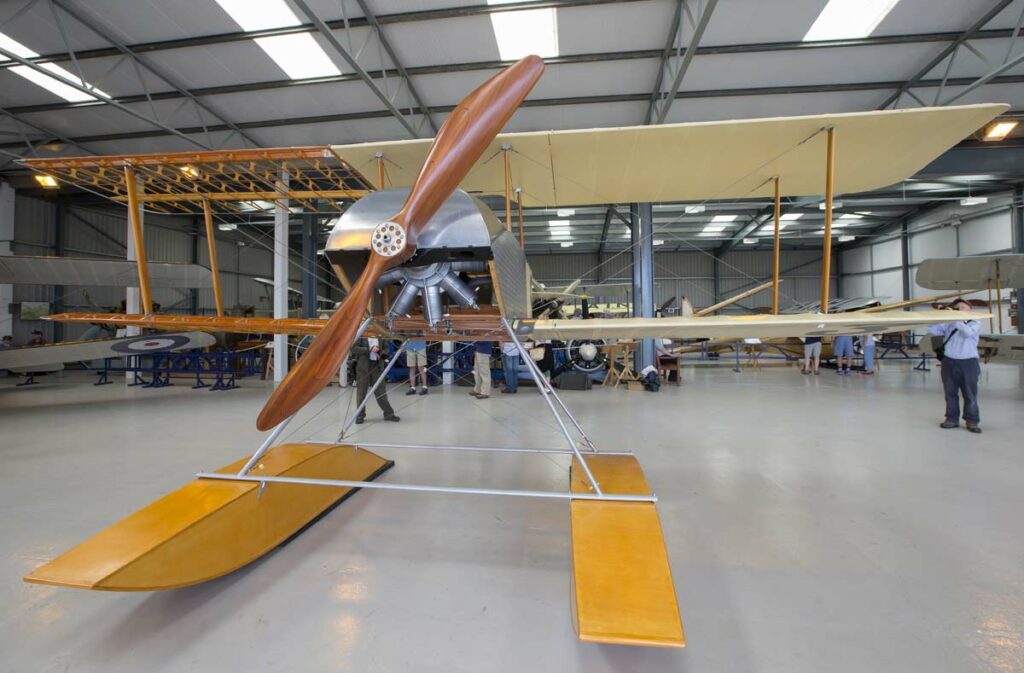The Sopwith Tabloid, a significant British aircraft from the early 20th century, stood out in design, performance, and military contributions. This piece sheds light on its inception, key features, comparative prowess, and historical significance in warfare. Unveiled during the initial years of aviation, the Sopwith Tabloid represented British engineering excellence. As airplanes began to gain strategic importance, the Tabloid made its mark as a versatile and effective machine both in the skies and in combats.
History of the Development of the Sopwith Tabloid
Amid the backdrop of early 20th-century Europe, aviation was just beginning to spread its wings. The potential of airpower was becoming evident, leading to a rush among nations to develop capable aircraft. Enter the Sopwith Tabloid, a product of the Sopwith Aviation Company.
First taking to the skies in 1913, the Sopwith Tabloid was initially designed as a sports aircraft. It soon, however, demonstrated its prowess by winning the 1914 Schneider Trophy, a race for seaplanes and flying boats. Given the era, and the onset of World War I shortly after, the utility of such aircraft in reconnaissance and combat became clear.
It’s worth noting that the term “Tabloid” related to its compact design, reminiscent of the ‘tabloid’ newspapers of the time.
Design of the Sopwith Tabloid
Compact and efficient – the Sopwith Tabloid was an exemplar of early biplane design. With a wingspan of approximately 25.5 feet (7.77 meters) and a length of about 22.5 feet (6.86 meters), its dimensions were modest.
The biplane’s key advantage was its streamlined, efficient structure, enabling agility and speed. The aircraft was primarily wood-framed and fabric-covered. The Tabloid, with its distinctive single-bay wings and forward-set cockpit, offered pilots a clear field of view.
However, its compact design also posed challenges. The cockpit’s limited space and the aircraft’s sensitivity required skilled pilots to handle effectively, particularly in combat situations.

Performance of the Sopwith Tabloid
Powered by an 80 hp Gnome Lambda rotary engine, the Tabloid boasted a top speed of around 92 mph (148 km/h) – impressive for its era. Its service ceiling reached approximately 15,000 feet (4,572 meters) and it had a range nearing 250 miles (402 kilometers).
Against contemporaries, the Tabloid’s performance was commendable. Its speed and maneuverability, especially, set it apart from many competing aircraft of its time.
Military Use and Combat of the Sopwith Tabloid
Initially conceived as a sports plane, its impressive performance metrics didn’t go unnoticed by the military. It was soon armed and pressed into service.
Equipped with a forward-firing Vickers machine gun and the ability to carry small bombs, the Tabloid saw action in the early stages of World War I, particularly in reconnaissance and light bombing roles. It notably took part in the first-ever British bombing raid on German Zeppelin sheds.
Compared to some other aircraft in World War I, the Tabloid had advantages in speed and agility. However, as the war progressed and aircraft technology advanced rapidly, the Tabloid became somewhat outdated.
The aircraft wasn’t widely exported or sold to other nations in large numbers. Its military use was relatively short-lived, replaced by newer, more specialized aircraft as the war continued.
The Sopwith Tabloid, while serving for a brief period, showcased the rapid advancements in aviation during the early 20th century. Its design, performance, and military contributions underline its importance in the annals of aviation history. As we reflect on its journey, the Tabloid emerges not just as an aircraft, but as a symbol of a transformative era.
Back to the Seaplanes section.